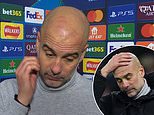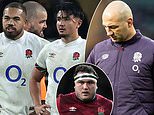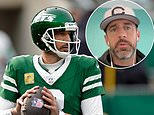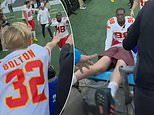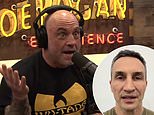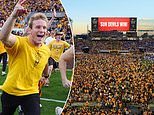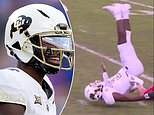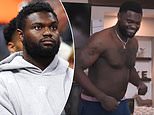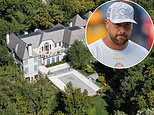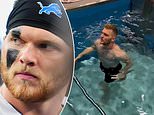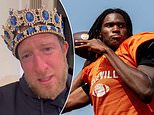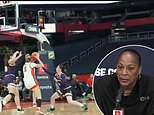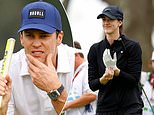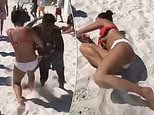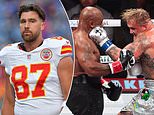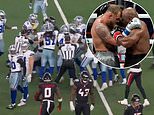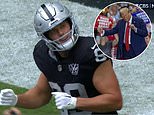150 years and counting ... ON THE ROAD discovers that The Ton's foundations are built to last
Morton 1 Ayr United 1
History stands in one’s eyeline at Cappielow. History is in your seat. History is on the park.
Immediate observations on the 150th anniversary of Morton can be stated simply. The crane that nods to the town’s shipbuilding past still peers over the ground. My seat is in the Allan McGraw stand, a tribute to Mr Morton.
And, on the park, two lads who played in a European final embrace at full time. Steve Whittaker, assistant manager at Ayr, and Kirk Broadfoot, central defender at Morton, were in the Rangers side that lost the 2008 UEFA Cup Final.
Their latest meeting on a chilly Greenock evening was more football in the raw.
This is not a criticism. Morton have survived for 150 years. It takes much to achieve this. It takes commitment. It takes work. It takes people.
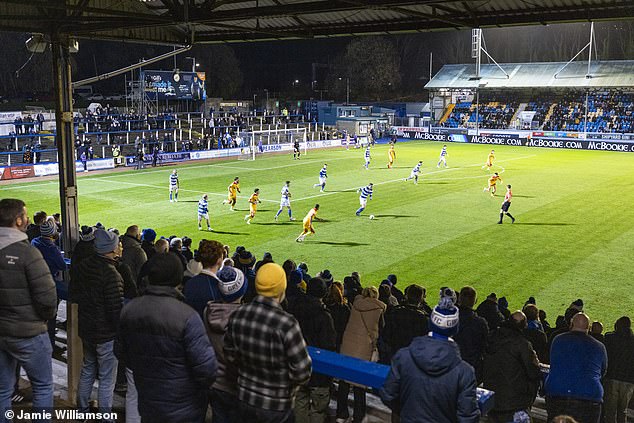
Fans watch Morton's 1-1 draw with Ayr United from the famous Cowshed
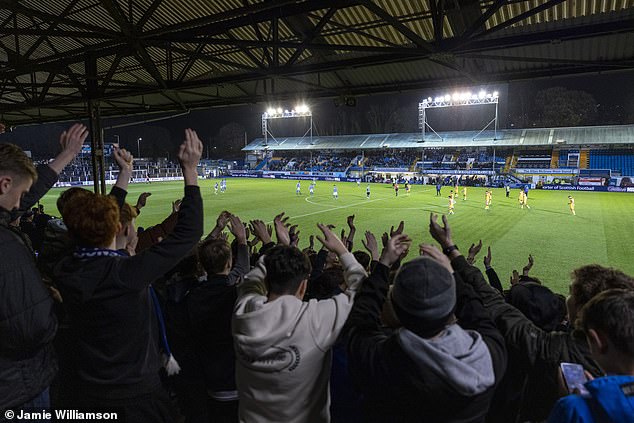
The Greenock club are celebrating their 150th anniversary year
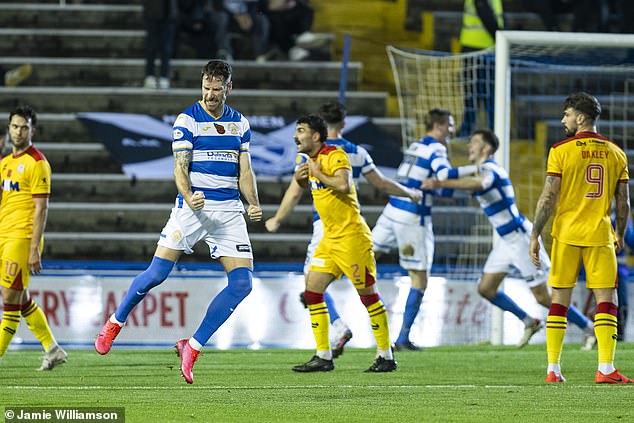
Kirk Broadfoot celebrates after helping set up Morton's goal for Iain Wilson
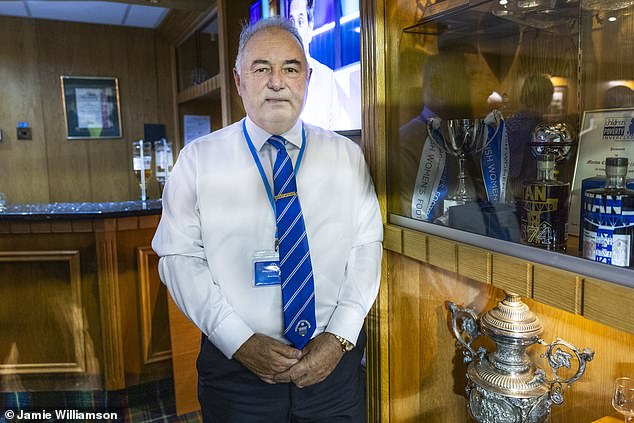
Morton chairperson John Laird is both a fan of the club and a businessman
‘I come from that shipbuilding background,’ says John Laird, chairperson. ‘My grandparents worked in the shipyards. I lived with them from two years old until I got married when I was 29. I worked in the shipyards, too, as a draughtsman.’
His tale has the authentic ring of hammer on steel but it also has its curiosities. Laird, 66, was signed by Chelsea as a lad, took redundancy from the shipyards at 22, started and maintained highly successful businesses, managed world champion boxer Chris Eubank for 13 years and is now at the helm of the club he loves.
He serves as an introduction to the modern history of Morton. He worked with previous owners Ian Wilson and Douglas Rae, helped the club after the catastrophic reign of Hugh Scott and had a long association with McGraw.
But, first, Morton, the briefest of histories. The club were born on October 4, 1874. Their name, however, is still a matter of debate. Did it come from Morton Terrace, where the founders lived? Or was it in homage to the first sponsor, Provost James Morton? Most historians opt for the latter theory.
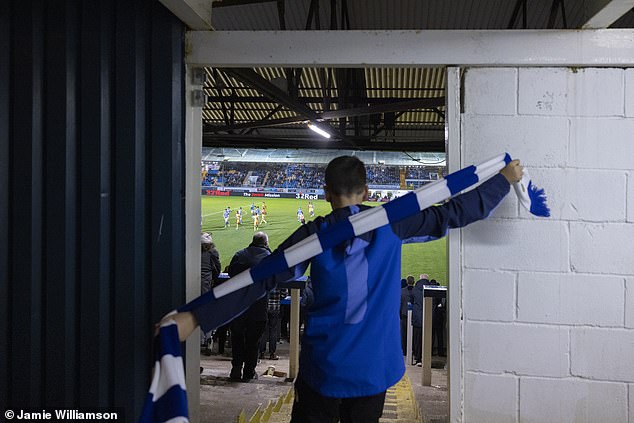
A young fan savours the perfect vantage point for the Championship match
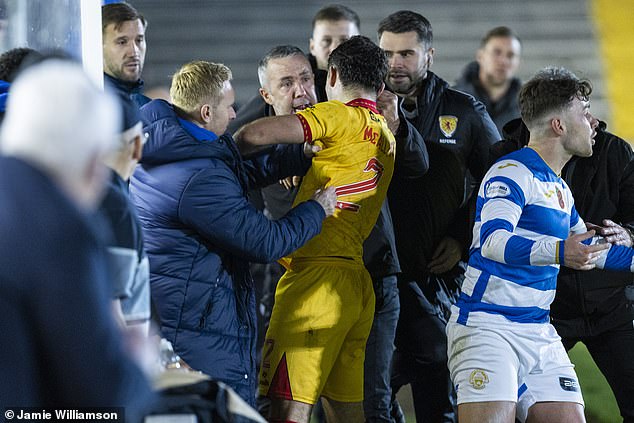
Morton boss Dougie Imrie is involved in a flashpoint with Nick McAllister of Ayr United
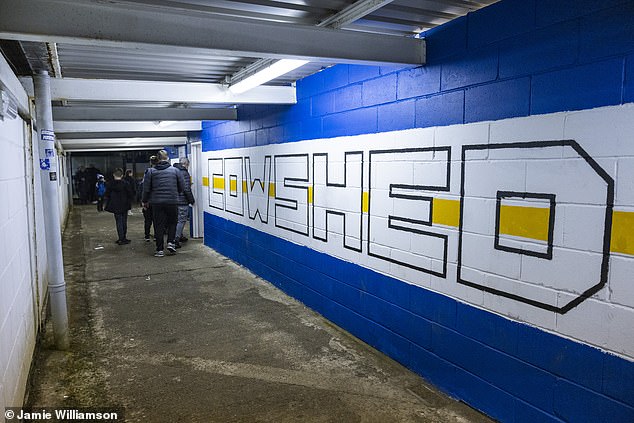
The rear entrance to the Cowshed enclosure at Cappielow Park
The reason for the club’s survival rests in the hands of supporters, most conspicuously Morton Club Together, and families such as the Wilsons and the Raes who dug into their pockets over the years. Douglas Rae, in particular, was a saviour after the Scott fiasco.
Laird is both a fan and a businessman. ‘I was a footballer when young,’ says Laird who went on to make his fortune in engineering and the events business. ‘I signed for Chelsea from school but I was training at Morton when I was 13.’
His career in London was short-lived. ‘I was a nice boy but, if somebody punched me, I was taught to punch them back and I got into a bit of bother at a tournament in Sweden. I was suspended. I didn’t agree with that. I came home but Chelsea held my registration.’
This meant Laird could not sign for a senior club. He trained as a draughtman and went to work in the yards. ‘I took my redundancy at 22. I remember it was £3,300. That was a lot of money.’
Laird had met contacts in the oil industry. He knew it was in the ascendancy while his current industry was in decline. He rented a portable cabin and a new life was born, serving the needs of oil infrastructure.
Morton has regularly tugged Laird back into its fold over the years.
‘Allan (McGraw) called me up to help him out with transfer deals,’ says Laird. He was subsequently called upon to facilitate deals that saw such as Derek Lilley, Alan Mahood and Derek McInnes leave the club. The transfer fees in the 1990s were extraordinary by today’s standards.
‘The finance guy here has put up a wee video that says the combined transfer fees from these players and some others would be about £26million in today’s money,’ says Laird.
He is straightforward in his reasons for taking the post of chairperson.
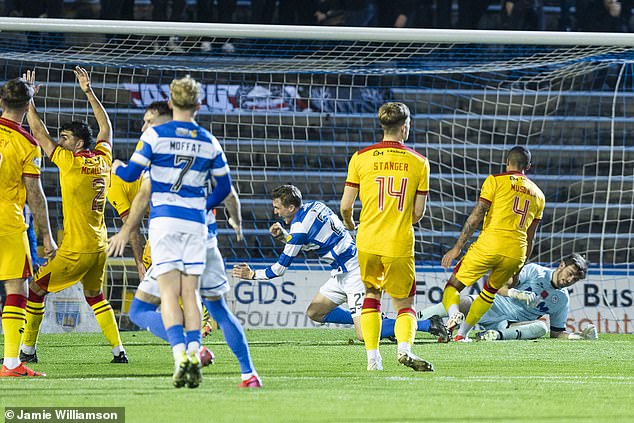
Wilson runs away in delight after opening the scoring for Morton
‘I like to think I am a loyal person. The Wilson family and the Rae family put a fortune in here over a period of 60 years. I want to keep their names and that investment alive. The other thing is that I want to give something back to the community.’
Brian Bonar, 75, a Morton fan who lives in San Diego, is a major benefactor through his company Dalrada. ‘He has put in about £1m over three seasons without any fanfare,’ says Laird. ‘We would both love to see Morton in the Premiership in our lifetimes.’
There is a solid business strategy. ‘I have brought in policies and processes and I would hope these would ensure the club is run efficiently after I have gone.’
The Cowshed is opposite the main stand. It’s a ramshackle cathedral for the true believer. ‘Don’t ask about highlights,’ says Alan Coyle, a teacher. ‘If you are a Morton fan it’s about moments rather than spectacular triumphs.’
Indeed, Morton have won only one Scottish Cup (1922) and never been champions of the top division. ‘I know it sounds cheesy but Morton to me is all about the community link,’ says Coyle. ‘It’s central to the town and to my life. I’ve been standing in this spot in the Cowshed for decades. It’s where I meet my mates and we discuss important things like the precise capabilities, or lack of them, of a succession of left-backs.’
‘My first match would be in 1982 when I was seven. I started going with my schoolmates and never stopped.’
Like all Morton fans, he bows his head in the mere remembrance of Andy Ritchie but invokes the midfield of Mahood, McInnes and Janne Lindberg in the 1990s as a powerful force.
His son, Angus, 10, now follows in dad’s footsteps. ‘We come to the game together and then split up as he heads to a spot with his mates to make a noise,’ says Coyle.
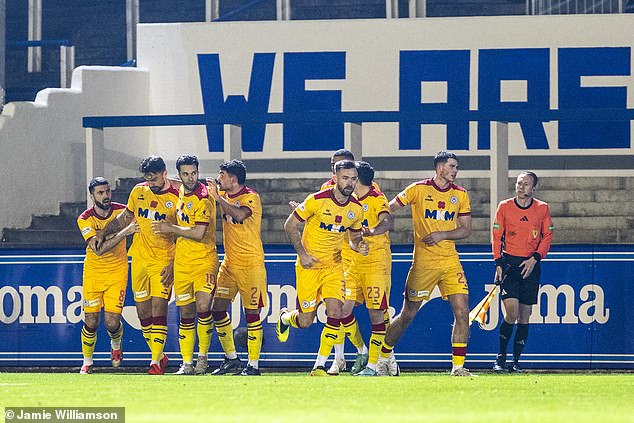
Former Morton striker George Oakley, second from left, equalised for visitors in second half
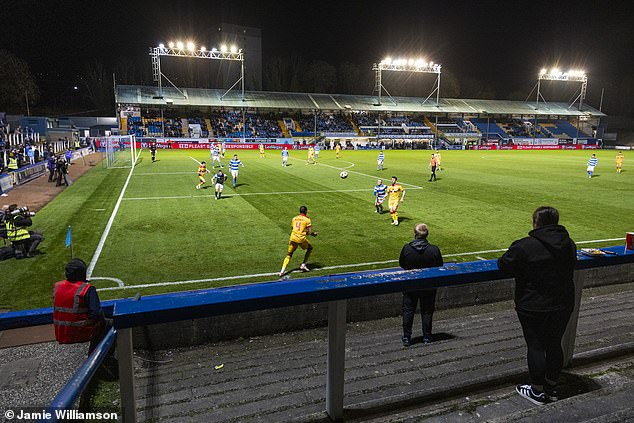
Supporters enjoy the unique Cappielow atmosphere under the Friday-night lights
His best memory? ‘In 2003 we went into the last game of the season knowing we had to beat Peterhead to ensure promotion from the third division and we did it. It was just after the club had come back from the brink in terms of going out of business.’
This match is also recalled with evident affection by Ian MacGillivray, 60, a retired teacher. Its significance is increased by the presence of a certain midfielder on the day. ‘I had taught Chris Millar the year before and, on the day before the match, I took a good luck card to his door,’ says McGillivray.
‘My first game was when I was four in 1969. I was the club mascot on January 1, 1976, when we played St Mirren. We won 1-0.’
He has fond memories of the Benny Rooney era when Morton were a force in the top division. 'I remember when we beat Celtic 1-0 here in 1979. That was not considered a shock, we had a good side.
'But when we beat Celtic in the League Cup in 2013 it was a major upset. A friend and myself went to Parkhead and found the scanning of the ticket to get in a bit confusing because we were from the backwoods,' he smiles.
He is briefly serious about the future. 'We should have aspirations to be in the Premiership. At one time we would be considered at least the equal of such as Kilmarnock, Motherwell or St Mirren. But I'll still come here whatever.'
On a night when the past was the understandable focus, it might be pertinent to cast a ray of light on the future. As the senior team fought for a point, the club’s under-18s were defeating Ayr 4-2, continuing a 100 per cent league record complemented by knocking Celtic out of the cup.
There is still a youthful spring in the step of a club of 150 winters.




